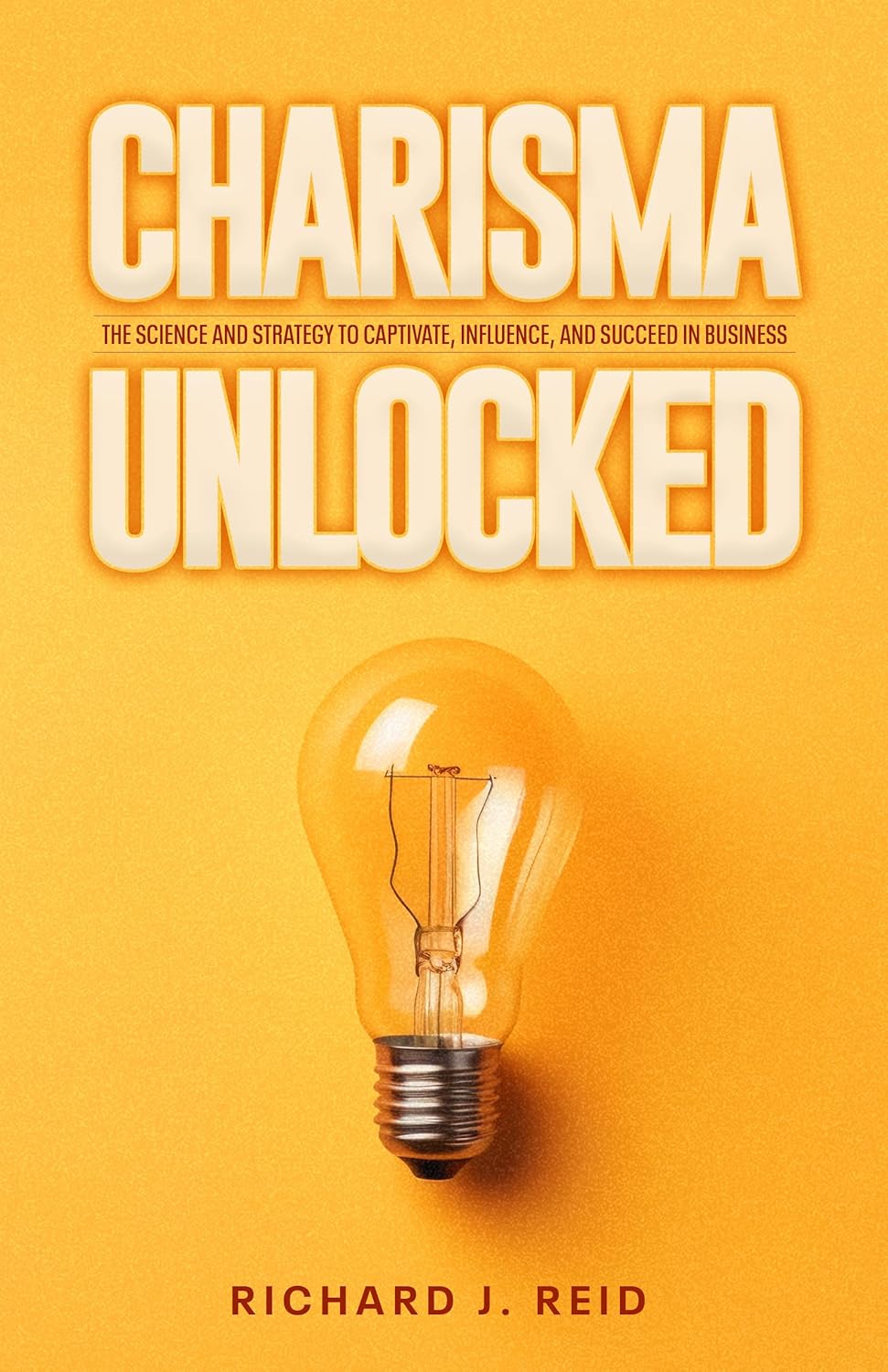Executive Summary
Delivering an impactful presentation is not merely about sharing information; it is about ensuring your message resonates with the audience, is remembered, and inspires action. Drawing on psychology and neuroscience, this whitepaper explores how understanding audience attention spans, cognitive processes, and emotional engagement can help business professionals deliver compelling presentations. Incorporating storytelling, clear messaging, and well-designed visual aids enhance the speaker’s ability to communicate effectively, avoid cognitive overload, and leave a lasting impact. By applying these principles, business professionals can move beyond simply presenting and achieving influence.
Introduction
Today’s business environment is more fast-paced and competitive than ever. Audiences are constantly bombarded with information, creating an attention economy where securing focus and engagement is increasingly challenging. To excel as a presenter, a business professional must go beyond content delivery and strategically design their presentation to align with how the brain processes, retains and recalls information.
This whitepaper delves into the psychological and neurological principles behind attention, memory, and engagement, equipping presenters with actionable strategies to craft persuasive, memorable, and impactful presentations.
Understanding Audience Attention and Cognitive Overload
The Challenge of Limited Attention Spans
Research has shown that human attention spans are limited and continue to shrink in our distraction-prone world. Studies by Microsoft suggest that average attention spans have decreased to as short as 8 seconds. For a presenter, this means the need to:
- Quickly captivate the audience.
- Continuously re-engage attention throughout the presentation.
The human brain is designed to focus selectively, filtering out irrelevant stimuli. Therefore, only presentations with explicit, engaging, and emotionally relevant content can maintain an audience’s focus.
Cognitive Overload and Its Impact
The principle of cognitive load theory posits that the brain has a finite capacity for processing information. Overloading this capacity leads to confusion, disengagement, and reduced information retention.
Cognitive overload often occurs when:
- Too much information is presented at once.
- Slides or visuals are cluttered and overwhelming.
- Presenters default to jargon or overly detailed explanations.
Avoiding this requires simplifying material, breaking it into digestible chunks, and focusing on only the most essential takeaways.
Using Storytelling and Emotional Engagement to Captivate Audiences
Why Storytelling Works
Neuroscience reveals that stories activate numerous areas in the brain, including those responsible for sensory experiences, emotions, and memory. Unlike pure data or abstract concepts, storytelling creates emotional connections, making the message more relatable and memorable.
The Science of Emotional Engagement
When emotions are triggered, the brain releases neurotransmitters like dopamine, which enhance memory formation. Presenters who appeal to their audience’s emotions can create a more lasting impression by weaving empathy, humour, or curiosity into their narrative.
Key Storytelling Techniques:
- Begin with a Hook
Start presentations with an audience-relevant story, anecdote, or provocative question that immediately captures attention. For example, recounting a relatable customer success story or sharing a bold statistic can evoke curiosity and establish context. - Create Emotional Tension
Introduce a challenge or conflict your business, industry, or audience faces. Then, reveal how your solution solves it. Conflict and resolution are central to human storytelling. - End with a Vision
Conclude your story with an aspirational takeaway, describing how the solutions or ideas you’re presenting can drive success for the audience. Inspire your listeners by appealing to their own goals and desires.
Structuring Presentations to Align with How the Brain Processes Information
The Power of Structure: Three Acts Framework
The brain craves structure, especially when processing complex ideas. Borrowing from storytelling frameworks, crafting a presentation with a three-part structure—Beginning, Middle, and End—simplifies retention:
- Beginning (Grab Attention): Clearly state your purpose, the stakes, and the benefit to the audience upfront.
- Middle (Develop Ideas): Use carefully sequenced points to logically build an argument or resolution. Focus on 3 key points at most to avoid overwhelming your audience.
- End (Call to Action): Summarise your message while giving the audience a clear direction, whether they should adopt a proposal or move forward with collaboration.
Chunking for Retention
The brain can comfortably remember 3 to 5 pieces of information. “Chunking” refers to grouping concepts into memorable units or themes. For example, segmenting a product presentation into 3 key deliverables helps reduce mental strain and improves recall.
Repetition Reinforces Retention
The serial position effect suggests that people remember the first and last pieces of information best (primacy and recency effects). Therefore, repeating key points throughout, especially at the beginning and end of a presentation, optimises memory retention.
Visual Aids, Clear Messaging, and Cognitive Simplicity
The Role of Visuals
The brain processes images 60,000 times faster than text. Well-designed visuals clarify complex ideas, reinforce information, and maintain audience focus.
Best Practices for Visuals:
- Minimalism: Limit each slide to one core idea to avoid clutter. Too many graphics, text blocks, or data points can be overwhelming.
- Data Visualisation: Simplify numbers and data through charts, infographics, or diagrams. Highlight key takeaways directly on graphs to ensure clarity.
- Consistency: To avoid distraction, use a cohesive colour palette, fonts, and layout styles throughout your presentation.
The Power of Simplicity
When sharing information:
- Use short, punchy sentences rather than paragraphs on slides.
- Avoid unnecessary jargon or technical terms where possible.
- Use metaphors or analogies to explain complex ideas clearly.
Examples of Cognitive Simplicity in Action:
- Instead of showing a slide packed with 20 bulleted benefits, focus on “3 key benefits” and elaborate on each verbally.
- Replace text-heavy slides with impactful images that complement what you are saying.
Examples of Leveraging Psychology and Neuroscience
Case Study 1: Simplification and Engagement
A corporate executive delivering a sales pitch to potential clients simplified their message into 3 key points. They introduced each section with a personal story from a previous client interaction, triggering an emotional connection. Minimalistic slides conveyed one takeaway per visual, resulting in higher client satisfaction and understanding.
Case Study 2: Using Structured Storytelling
A technology entrepreneur pitching investors opened with a narrative about a small business grappling with inefficiencies (the relatable challenge). They described how their product resolved the issue, using data to underscore the results (the resolution). Ending with an inspiring vision for the larger market, they achieved a memorable impact and secured funding.
Conclusion
Impactful presentations are not about inundating audiences with all available data—they are about understanding how the brain works, engaging emotions, and presenting information clearly and memorably. By applying insights drawn from psychology and neuroscience, business professionals can deliver presentations that:
- Maintain attention by reducing cognitive overload.
- Create emotional resonance through storytelling and empathy.
- Align with the brain’s natural processes for retaining and recalling information.
When combined with strong visuals and simple messaging, these strategies ensure a presentation is heard and acted upon.
Key Takeaways for Business Professionals
- Engage Early and Often: Use hooks and emotional storytelling to capture attention at the start.
- Avoid Cognitive Overload: Present no more than 3–5 key messages, using visuals and chunking to improve retention.
- Leverage Visual Simplicity: Design slides for clarity, not complexity. Use one central idea per slide.
- Structure Effectively: Use a three-act presentation framework (Beginning, Middle, End) to organise information systematically.
- Connect Emotionally: Engage audiences with relatable narratives and appeal to their goals and aspirations.
By mastering these techniques, business professionals can elevate their presentation skills and leave a lasting impact on any audience.
References
- Mayer, R. E., & Moreno, R. (2003). “Nine Ways to Reduce Cognitive Load in Multimedia Learning.” Educational Psychologist.
- Cialdini, R. (2001). Influence: The Psychology of Persuasion.
- Kahneman, D. (2011). Thinking, Fast and Slow.
- Heath, C., & Heath, D. (2008). Made to Stick: Why Some Ideas Survive and Others Die.










